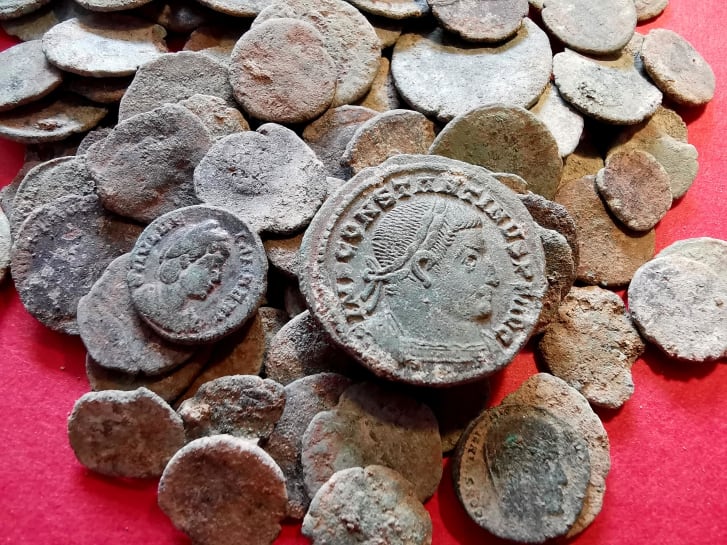Foraging badger uncovers a hoard of more than 200 Roman coins dating back to the THIRD century in a Spanish cave
Archaeologists are thanking a hungry badger for the discovery of a stash of 209 ancient Roman coins, found in a cave in the Asturias region of northern Spain.

The find came a few months after Storm Filomena, a historic blizzard that hit the Iberian peninsula in January 2021, blanketing Madrid in several feet of snow.
The unusual precipitation would have made it hard for animals to find food, reports the Guardian.
Experts believe that a badger rooting around for something to eat in the snow happened upon the crack in La Cuesta cave, where the coins were hidden, unearthing the treasure.
The disappointed badger left about 90 coins littering the ground in front of his den, where Roberto Garcia, a local resident found them. He called in the archaeology experts and in April the Asturias department of culture began conducting excavations in the cave.

The copper and bronze coins dating from the third to fifth centuries A.D. Some were minted in far-off cities, including Constantinople, Thessaloniki, Arles, Lyon, Rome, London, and Antioch.
Experts believe ancient Spaniards might have hidden the treasure during the invasion of the Suevi, a Germanic people, in the year 409 A.D.
“We think it’s a reflection of the social and political instability which came along with the fall of Rome and the arrival of groups of barbarians to northern Spain,” Alfonso Fanjul Peraza, an archaeologist at the Autonomous University of Madrid who led the dig, told CNN.
The team’s studies to date have been published in the Cuadernos de Prehistoria y Arqueología at the Universidad Autónoma de Madrid. It’s the largest find of its kind in a Spanish cave.

The coins are undergoing cleaning and conservation ahead of going on view at the Archaeological Museum of Asturias, and further excavations are planned for the site, as experts believe they may be part of a larger hoard.
“We want to know,” Fanjul Peraza told El Pais, “if it was a one-off hiding place, or if there was a group of humans living there,”





